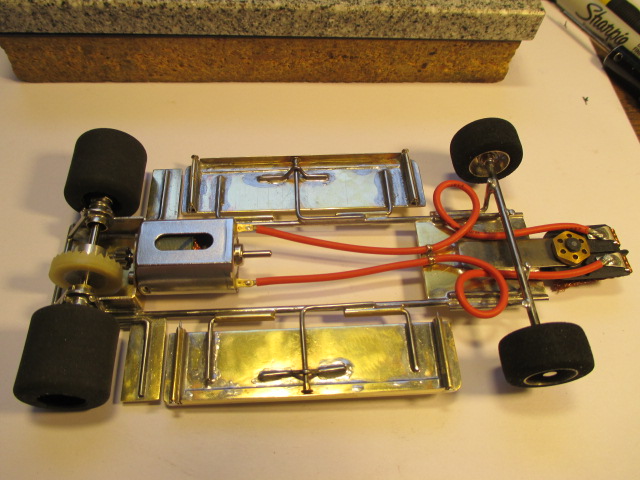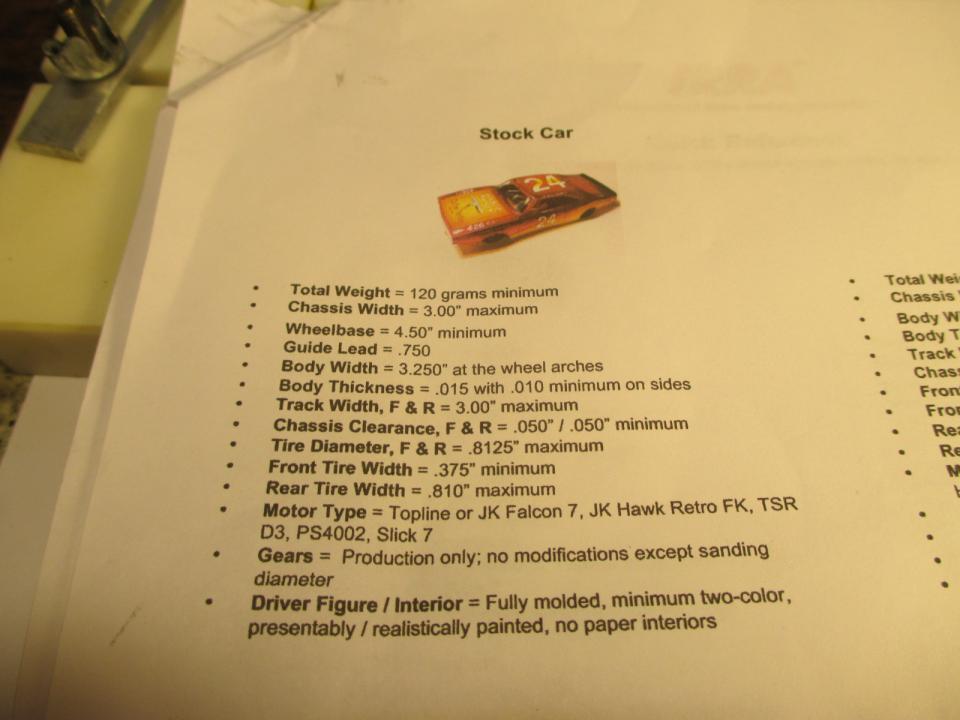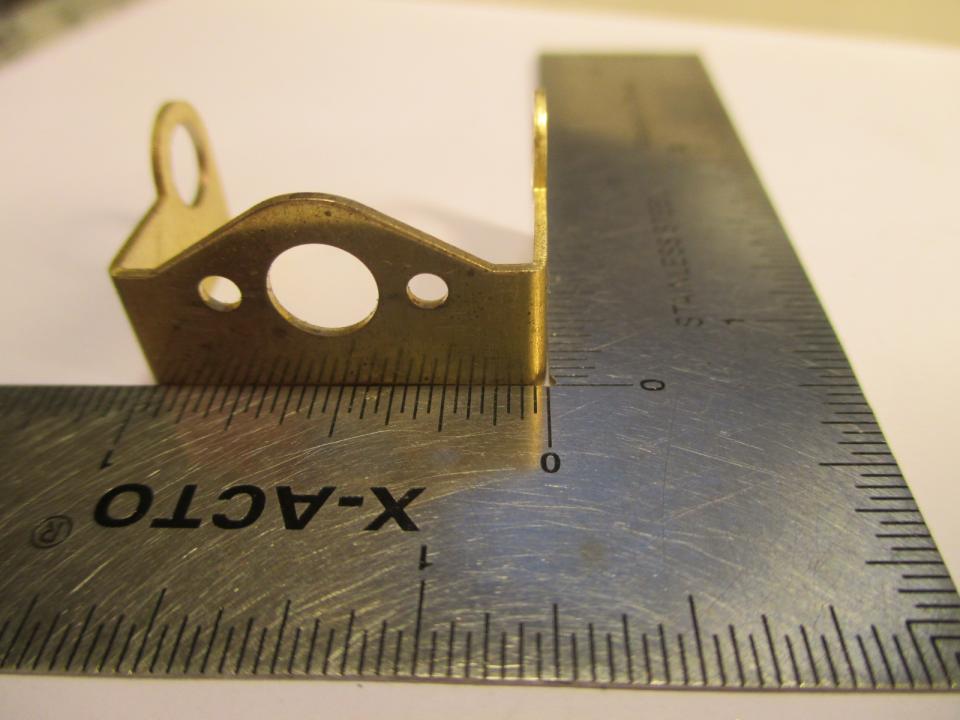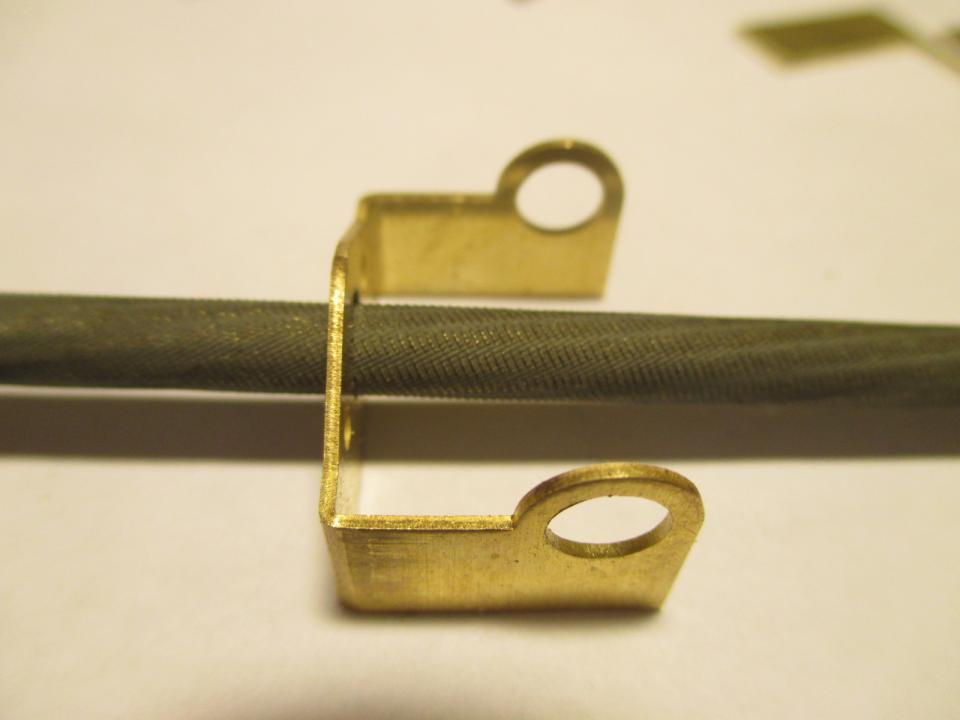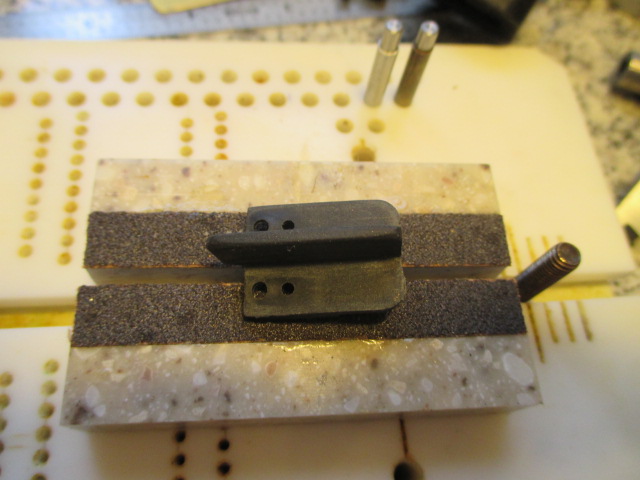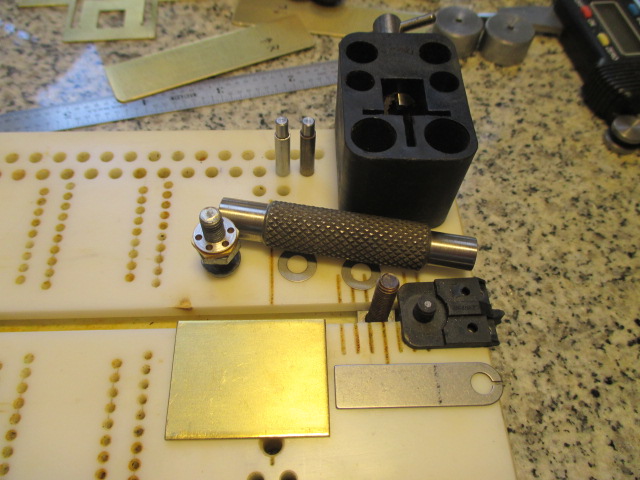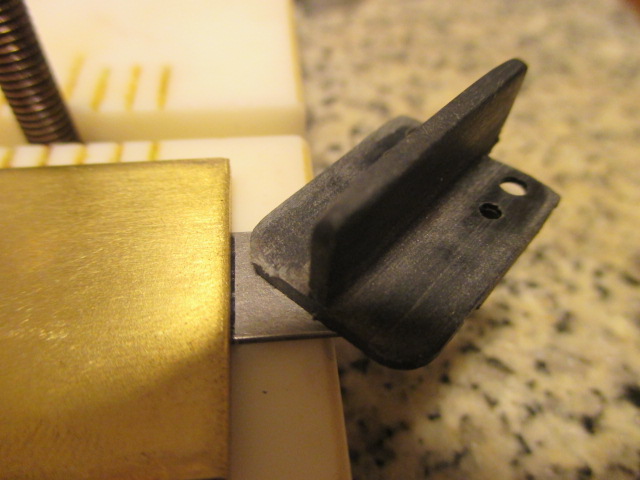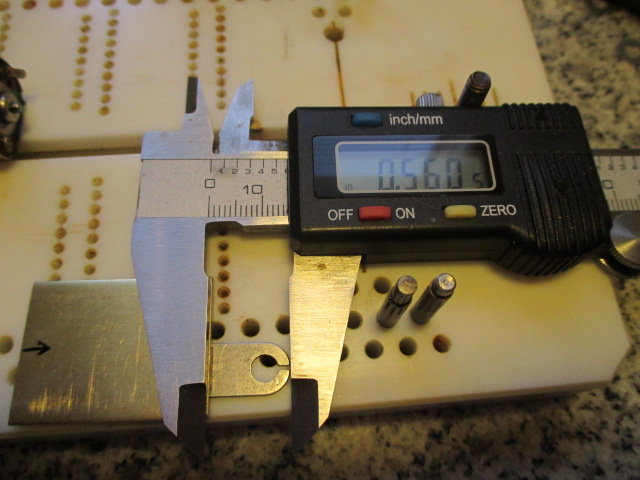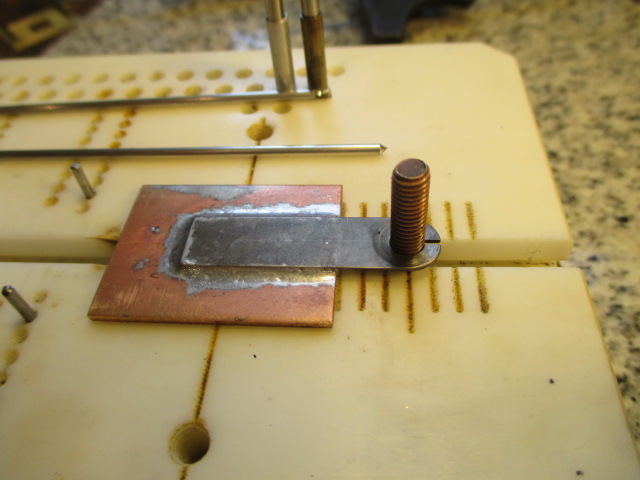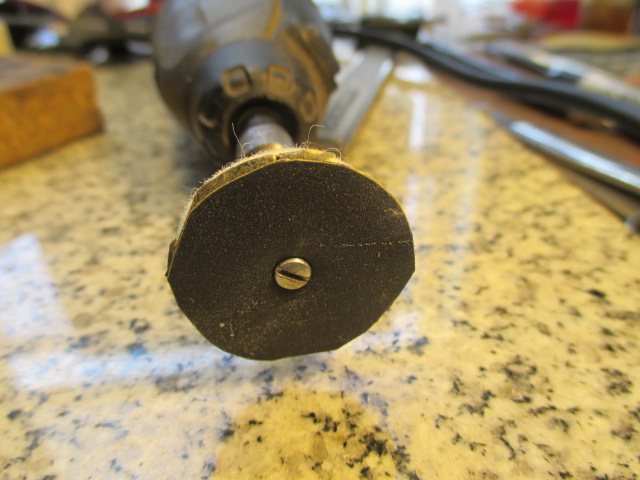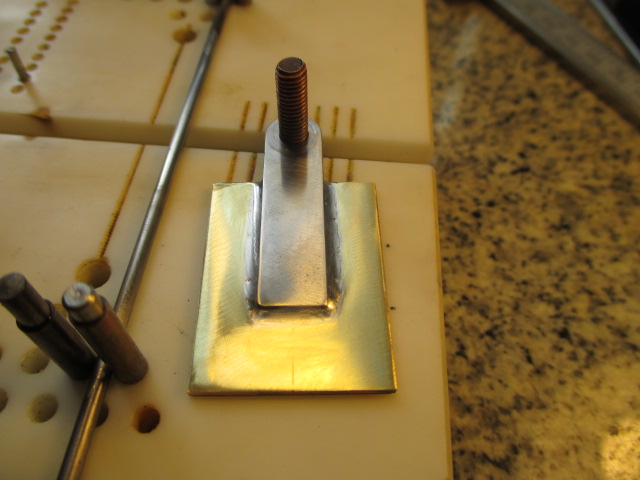Finished April 2014:
Here's where it all started:
I liked the Mike Katz inspired stock car chassis design so much, I decided to make another one just like it. This time I took a smart pill with a Coke on ice, gathered up the Weller Gun, 60/40, acid, fan, table, clamp light, latex glove, 400 wet/dry sandpaper, the pieces of piano wire, long extension cord, and set up a serious wire tinning camp in the back patio with the fan sucking the acid fumes away. I thought the latex glove would instantly fail once it touched acid, but it didn't. I should have been doing it this way a long time ago.....I tinned half of each piece then set it down to cool, picked up the next one, and so on until I had a nice pile of tinned wires. Hint: A Weller Gun Model 8200N is the bomb-diggety for tinning wire, especially if you take a small round file and carve a small U-shaped groove on the front bottom of the tip for the wires to nest in. Use lots of flux and lots of solder until it flows nice and wet, then wipe wipe wipe 3 times real fast with a paper towel. You need:
-a piece of 3/32 front axle a little longer than the width of the jig (Note: tin only the inside middle 2" of this piece - if you tin the entire length the wheels may not slide on the axle)
-2 pieces of .078 longer than needed for rails to run from back of bracket to the front end
-2 4" pieces of .063
-6 4" pieces of .055
-1 4" piece of .047
Parts needed for the build are a JK D3 offset motor bracket, Chicagoland .032 thick Brackagra bracket brace/weight, a chunk of 1.3" long by 1" wide .063 brass strip, a Slick 7 retro .050 steel tongue, 4 Avid RC $1.00 3/32 ball bearings, a pair of Pro Slot 3/32 ball bearings, 1 Koford rear axle no flats, HVR BB stock car front wheels, your choice of 3/32 13/16 rear wheels, four 3/32 front axle wheel keepers, some 7/32, .063, and 3/32 tubing, some 3/32 square tubing, some 1/8" "L" angle brass, .032 X 3/4" wide brass strips, an FK jig motor, 9 tooth ARP angled steel pinion, 28 tooth 48 pitch sleeved Parma or Red Fox or Koford crown gear, JK Hawk Retro motor, Slick 7 3/32 .023" axle spacers, RGeo rear retro jig wheels, Parma (The Blade) flag, two steel 10 thou flag spacers, Koford flag nut, TQ flag clips, Prime braid, an earring clutch back, some lead wires, and the IRRA legal stock car body of your choice with interior/driver and three numbers.
I'm going to go step by step with precise measurements so you can build your own Mike Katz inspired Pablo IRRA stock car. Hopefully you can avoid stupid mistakes which I have already made, such as, but not limited to, using "Front" retro jig wheels for the front axle of a stocker, ![]() or my personal favorite head banger "One hell of a big screwup" mistake of realizing the Brackagra needs to be trimmed to clear the inside edges of the rear wheels AFTER the chassis is 100% complete.
or my personal favorite head banger "One hell of a big screwup" mistake of realizing the Brackagra needs to be trimmed to clear the inside edges of the rear wheels AFTER the chassis is 100% complete. ![]() You DO NOT want to spend an hour masking a chassis in tape then having the hungry teeth of your band saw a millimeter away from your ball bearings !!! NOT GOOD Pablo, not good !!!
You DO NOT want to spend an hour masking a chassis in tape then having the hungry teeth of your band saw a millimeter away from your ball bearings !!! NOT GOOD Pablo, not good !!! ![]()
This is a real straightforward design using proven methods and parts that will make a nice handling car on a variety of tracks. Your race weight will be 122 grams without additional weight. My instructions are aimed at the (rare) proverbial IRRA newbie. If you are an experienced builder you probably don't want to be force fed a bunch of Pablo theory BS and building tips. If you want just the hard cold facts and specs just send me a PM and ask for my 1 page file "IRRA stock car Katz design". I welcome all experienced scratchbuilders to help me improve. I do make mistakes but my Slotblog friends always correct me. ![]()





